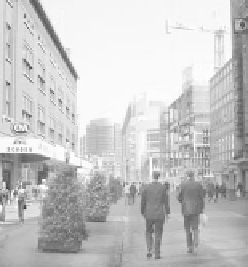Travel Reference
In-Depth Information
The Hague (Den Haag)
While the Dutch constitution identifies Amsterdam as the official
“capital,” The Hague has been the Netherlands' seat of government
since 1588. Or, as locals say, the money
is made in Rotterdam, divided in The
Hague, and spent in Amsterdam.
The Hague is the home of several
fine museums—including the excel-
lent Mau r itshu is a r t gal l ler y— a nd
international organizations such as
the International Court of Justice (at
the Peace Palace, where nations try to
settle their disputes without bloodshed;
tourable and described on page 253)
and the UN International Criminal
Tribunal for the Former Yugoslavia (not tourable). Urban but still
manageable—if not exactly charming—The Hague is ideal for a
few engaging hours of sightseeing.
OrIENTaTION
(area code: 070)
Though it has nearly a half-million residents (the Netherlands'
third-largest city), The Hague feels manageable for a sightseer. On
a quick visit, begin at the Centrum tram stop, between the TI and
the parliament complex; most worthwhile museums are near here.
I list no hotels for The Hague because Delft—so close it's practi-
cally a neighborhood of this city—is a much more appealing place
to hang your hat.
Tourist Information
The TI is opposite the Parliament building on Hofweg 1, near
the Centrum stop for tram #1. Pick up the free map; the better
€2 map isn't worth it, but the €1 information guide—while heavy
on glossy promotion—is worth having for a longer visit (Mon-Fri
10:00-18:00, Sat 10:00-17:00, Sun 12:00-17:00, toll tel. 0900-340-
3505—costs €0.45/min, www.vvvdenhaag.nl).
Arrival in The Hague
The major sights in The Hague are well-signed—just look for the
black-and-gold directional arrows.
By Tr a i n :
The Hague has two train stations: Central Station
(“Den Haag CS,” or just “Centraal Station”) and Hollands Spoor





















